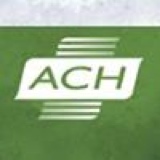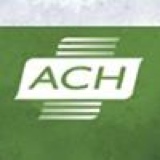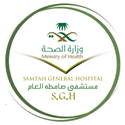Information
-
Document No.
-
Audit Title
-
Client / Site
-
Conducted on
-
Prepared by
-
Location
-
Personnel
Staff Interiew
-
Staff know how to access Infection Prevention Policies
-
Staff know the location of the Exposure Control Plan / Tuberculosis Control Plan
-
Staff are knowledgable about the blood spill protocol and which disinfectant to use, along with the kill time
-
Proper reporting of exposures (report immediately, complete UOR, report to Employee Health, notify supervisor / manager
-
What is done when you identify an empty hand sanitizer dispenser
-
What is done when you identify a full sharp disposal container
-
How is linen taken from the clean utility room to the patient's room
-
How is water taken from the ice/water machine to the patient's room
-
What items are disposed of in the red biohazard containers
-
When are refrigerator(s) defrosted/cleaned
Department Rounds
-
Have an employee demonstrate soap/water hand washing...20 seconds, paper towel to turn of water / open door
-
Have an employee demonstrate the use of alcohol gel before entering/exiting a patient room
-
Handwashing between patients, after patient contact after glove removal, after personal breaks
-
Gloves not worn in the hallway
-
Gurneys are cleaned after use with appropriate disinfectant<br>(ER, SDS, Radiology)
-
Clean linen is covered and maintained in a clean/dry area
-
Disposable blood pressure cuffs not used for routine patient care<br>(exception SDS/OR/PACU)
-
Soiled linen is placed in designated covered hampers
-
Clean utility is separate from dirty utility
-
18 inches of clearance from ceiling in clean utility room or other clean areas
-
All sterile supplies are dry with intact packaging, not stored on the floor
-
Low storage areas must have solid surface shelving
-
Storage of sterile supplies 8-10" above the floor, 2" away from exterior walls
-
Under sink storage is limited to waste and disinfectants / cleaners
-
Environment and equipment is clean and dust free
-
Crash cart is dust free
-
Crash cart- gloves immediately available
-
Crash Cart- sharps disposal
-
Crash Cart- last date checked documented
-
Crash Cart- Date of last defib strip
-
Crash Cart- date of 1st medication outdate
-
Accucheck monitor docked
-
Accucheck case and machine clean
-
Date last QC done
-
open date of high control or expiration date
-
open date of low control or expiration date
-
date test strips opened
-
No eating or drinking in the patient care area
-
Clean equipment is labeled clean / clean tag is removed prior to use
-
Shipping boxes not stored with supplies/ removed from clean areas
-
Soap dispensers are full and functional
-
Purell dispensers are full and functional
-
General appearance of the area is clean and uncluttered
-
Hampers used appropriately- ie. not bags on the floor, no overflowing linen
-
Ceiling tiles are clean and dry
-
Cleaning supplies are labeled and approved for use in the hospital
-
Urine collection bags (Foley) are not touching the ground
Medication Room
-
Refrigerator is labeled as "medication" refrigerator
-
Thermometer present
-
Multi-dose vials approved for multi-patient use
-
Opened vials labeled and dated
-
Expired medications? What? Removed and taken to pharmacy. Given to...
-
Safety devices are used for all injections, phelbotomy, venipuncture, & IV therapy. Exceptions to safety devices...
-
Sharps containers are accessible, secured to wall/counter and emptied when reach "full" line
-
Sterile irrigation fluid is opened for same day use only (<24hr). Date noted.
-
Other irrigation / prep fluids labeled and dated
-
Glass is disposed of in rigid sharps containers
-
Single use medication vials discarded
-
IV tubing labeled with date
Patient Room
-
Inspect patient rooms and bathrooms for inappropriate supplies or outdated supplies
-
Gloves boxes filled
-
Sharps container less than 3/4 full
-
Hand sanitizer at least 1/2 full
-
Soap at least 1/2 full
-
Garbage can with liner
-
No soiled linen on the floor
-
If bed is unmade- mattress intact?
Isolation Room / Cart
-
CDC isolation guidelines are available on isolation carts or other designated area in the department
-
Cart present
-
Correct sign on door
-
Adequate amount of supplies available
-
Only isolation supplies in the drawers
-
Hand sanitizer available and full
-
Wastebasket inside doorway
-
PPE worn correctly
-
Removed prior to leaving patient room
-
If negative pressure- PAPR hood utilized
-
If negative pressure- check logbook in maintenance- when on pressure to be checked/documented every shift by engineer
-
Equipment used in the isolation room is wiped down after use, before taking into another patients room<br>(dynamaps, thermometers, computers, stethoscope, etc.)
Refrigerators- staff and patient
-
Staff refrigerator is labeled "STAFF"
-
Thermometer present
-
Temperatures logged every day prior to today's date: dates temperatures not checked
-
Staff food/ containers identified
-
Open condiments labelled with staff's name and open date
-
Patient refrigerator is labled "PATIENT"
-
Thermometer present
-
Temperatures logged every day prior to today's date; dates temperatures not checked
-
Clean
-
No expired food
-
If applicable patient's food identified with name and bed #
Clean Utility Room
-
Clean items only
-
No medical supplies on floor
-
No medical supplies left in original shipping container
-
Nothing stored under the sinks
-
Check for outdated supplies
-
Door closed
Dirty Utility Room
-
Dirty items only
-
Door closed on soiled utility room
-
No storage of drinking cups, tissues, paper towels, toilet tissue
-
No hoses touching in floor drains
-
PPE available









